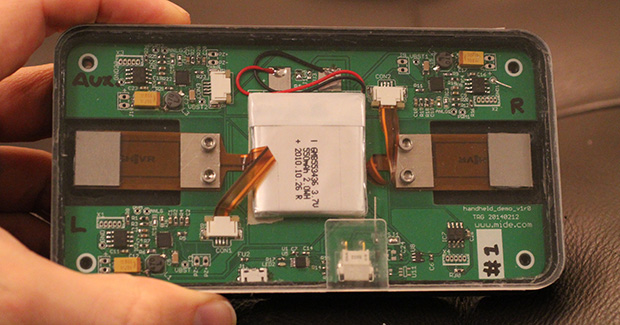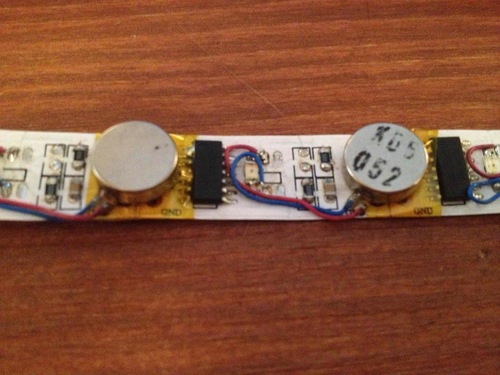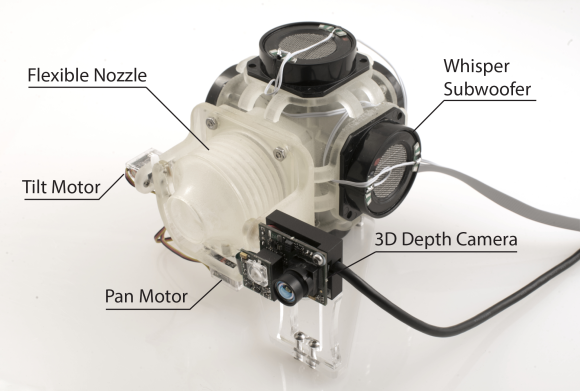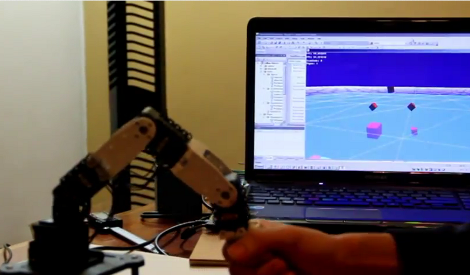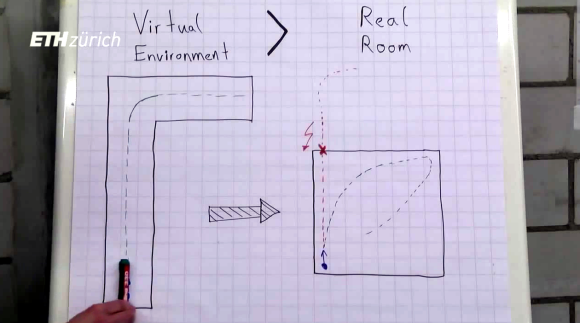
[AlexPewPew] tipped us off on some interesting virtual reality work going on at the Swiss Federal Institute of Technology in Zurich. Mapping a user’s head movement to match the images shown in a head mounted display is something the Oculus Rift is very good at. But in order to walk and move around freely in that virtual environment requires completely different hardware. We’ve seen some ingenious setups before, but nothing as efficient as this.
In the video above, they have put sheets of bar-coded paper on the ceiling in a grid pattern. A camera that mounts on the users head looks up at the grid of papers and gets the user’s location. The neatest part though, is how they are fitting a large virtual space into a small room. As the user walks down a straight virtual path, software is slowly making the actual path in the small room curve. The end result is the user walks in circles in the small room, thinking he or she is exploring a much larger space. Neat stuff!
If you have a head mounted display lying around, and can’t think of anything to enter into The Hackaday Prize contest, this would be a great concept to work on. What are you waiting for…get hacking!
Thanks to [AlexPewPew] for the tip!

